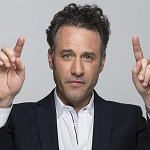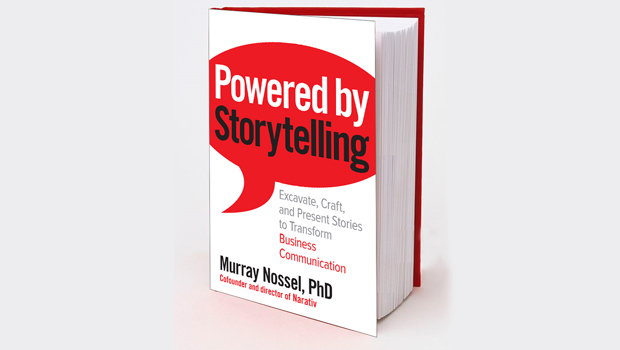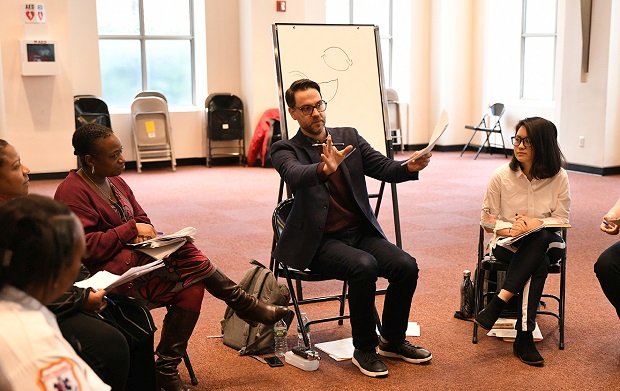Below is our recent interview with Sasha Dorje Meyerowitz, Chief Operating Officer at Narativ:

Q: Could you provide our readers with a brief introduction to Narativ?
A: Narativ has unusual roots. Our listening and storytelling method was born out of a crisis. Our founder Murray Nossel, a trained psychologist and social worker, discovered storytelling during the early days of the AIDS Crisis in New York. His terminal patients had no use for psychology or counseling. He understood that they sima sply wanted to leave something of themselves behind. He began to listen, and they began to tell their stories. At one point, they gathered these stories and delivered them on videocassette to legislators in Albany, who were about to discontinue funding for AIDS research. The legislators listened to the stories he collected which in part motivated the State Assembly to approve continued funding. At that moment, Murray understood that his listening and storytelling method generates powerful human-centered content, and could be applied in many different contexts. Over the last 20 years, our team of certified trainers have worked across diverse industries, big pharma, fintech, entertainment and social development are examples, to bring the humanizing power of storytelling to their business objectives and advocacy goals.
Q: What kind of services do you offer to your clients?
A: Traditionally, we’ve worked with large non-profits such as the Open Society Foundations, who understand that listening and storytelling are highly effective for giving voice to critical issues that shape social and political campaigns on behalf of marginalized populations. Storytelling can power real change. Our work with businesses began with some similar themes: to bring teams together and improve the “listening,” as we call it, which is a shorthand for the collaborative environment in an organization. From our point of view, listening and storytelling are closely linked. When the listening is good, the storytelling is good. When the listening is poor, it negatively impacts the storytelling. Our method draws people together and forges new connections. Much has evolved over the last 20 years in our work. Most recently, we’ve found that storytelling in corporate learning can radically alter the level of employee engagement and increase the genuineness of the content. Similarly, when sales teams use storytelling to connect personally with their product or services it makes a big difference in their sales process. More trust. Shorter sales cycles.
Here’s a list of our services:
Training – capture mission-critical experiential knowledge and share with new hires
and existing staff.
Sales – give salespeople a personal connection to products and services and create
more genuine relationships with their clients.
Leadership – hi-speed 5 hour program to creating presentation-ready stories. For up to 20 participants, this program is a support to seasoned, executive presenters.
Team Building – break down barriers and create deeper connections and a sense of
shared mission.
Advocacy – empower marginalized populations to seize their own narratives.
Q: Can you tell us something more about “POWERED BY STORYTELLING” book?
A: This book distills our methodology, perfected over 20 years, into 7 steps. It shares our operating principles – such as the reciprocal relationship of listening and telling I mention above – and gives many examples of how we’ve brought storytelling into organizations to effect change. It also invites you to think about your own story and how you shape your way of thinking and talking about yourself, whether personally or professionally. In particular the book emphasizes occasions when storytelling improves collaboration. Often, that’s understood as a feeling: people feel more “connected” through seeing the humanity of their coworkers in the unique and powerful way storytelling provides. But interestingly, it also translates into behavioral changes. Here’s how. When people learn something deeper about what shapes the personality of a colleague—the “why” of who their colleague is—they can modify their work communication to be more adaptive for that person’s needs and style. In that sense there’s real change in their ability to collaborate, smooth out wrinkles, and forge more productive bonds as a team.
Q: What makes you the best choice?
A: We are expert listeners. Our emphasis on listening really sets us apart. We hear again and again from our clients how at first that emphasis often catches people off guard—in the most positive sense. It’s almost as if it reminds people of something they have, but have forgotten to use. We all may think we are listening, but actually it’s often more likely just hearing. There’s lots written about how to develop more active listening. However we take that one step further. By pointing to the mutually influential relationship of listening and telling, we make the case that we are all always co-creating our communication exchanges. Now, the more you sensitize yourself to that fact, actually, the more agency you have to accomplish your goals. Be they to mesmerize an audience, to connect siloed-departments, to find the hidden stories that can change your organization, or to build better relationships based on genuine trust with your clients. When you start with listening, it puts you on a more stable footing to get things done.
 Recommended: Vas Nair Design – Provides Interior Design And Home Staging Creative Services
Recommended: Vas Nair Design – Provides Interior Design And Home Staging Creative Services
Q: What are your plans for the future?
A: Everyone’s voice matters. That is the central ethos of our company and it’s our roots as well. That principle is applied differently based on the context, but especially in business, it means that everyone can contribute to what we call the “knowledge cycle.” Information flows cyclically as new people enter a company, hear previous stories, assimilate and act on those, and then contribute their own stories to the knowledge pool. This is the mechanism of a storytelling culture, which brings so much good and humanity into any organization, while at the same time, sharing knowledge in order to meet business objectives. It’s a humanizing approach to work. We will to continue this share the benefit of this approach with businesses and in advocacy. And on a personal note, our founder has begun a monumental work of storytelling based on our method, called the World Mother Storytelling Project. In it he seeks to capture the stories of mothers around the world and use them for good as well.
Activate Social Media:


 Recommended:
Recommended: 